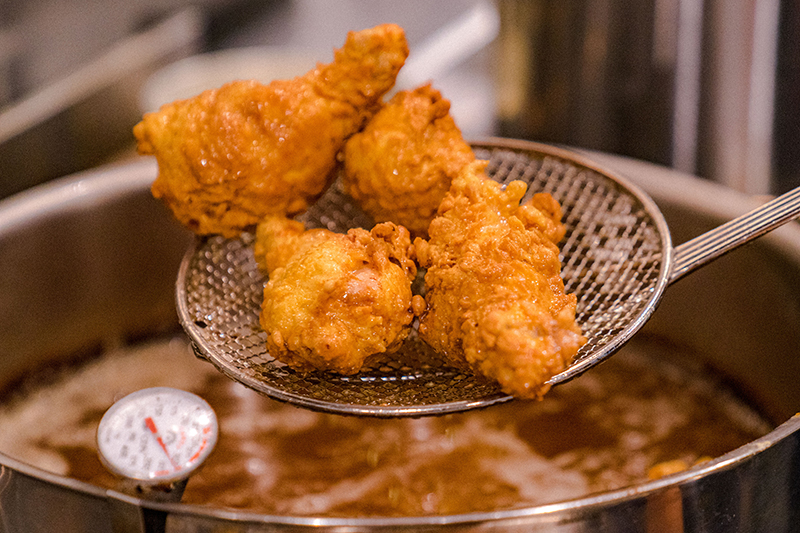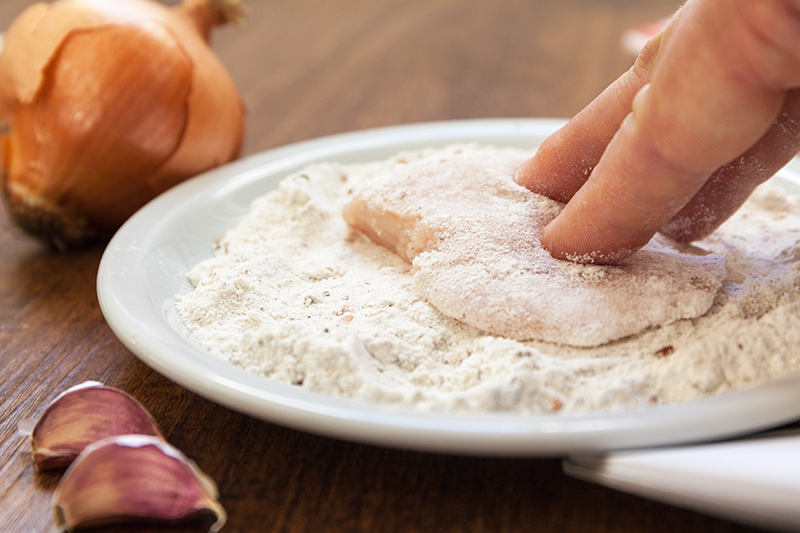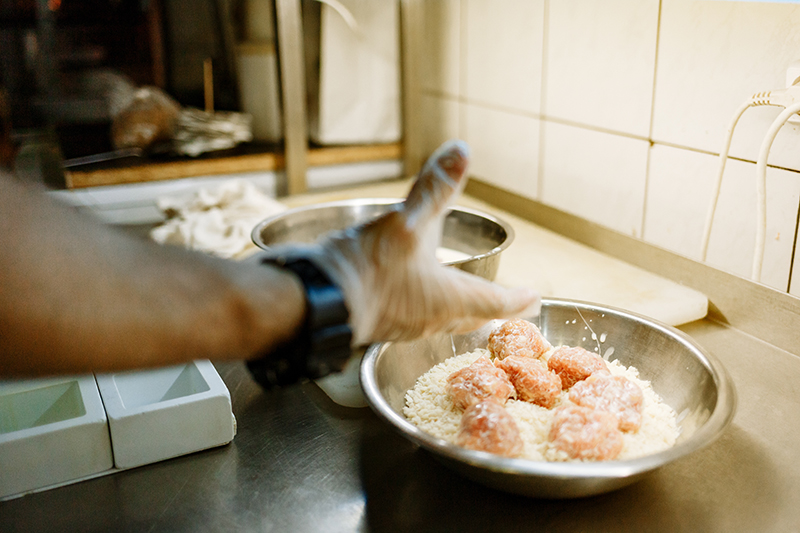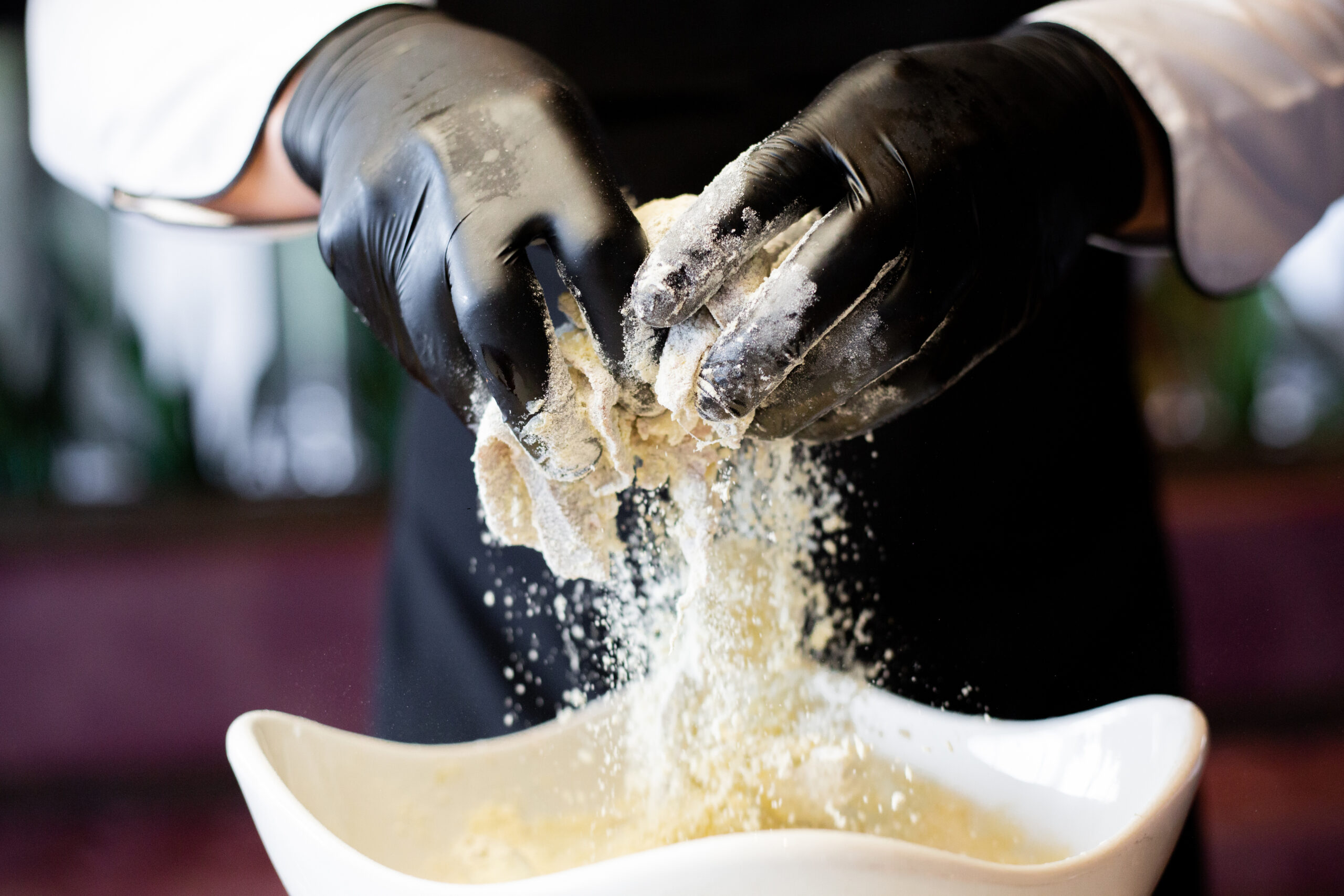Start off the new year with kitchen goals, or better yet, frying goals.
Because large segments of food-service customers search for products with unique attributes, operators must find those ingredients that achieve that optimal balance or that appeal to their critical customer base. Whether it is a customer seeking out clean, safe or improved tastes, traditional frying methods have met new challenges.
“In the South, we love fresh local seafood, especially when it’s fried to perfection in a light, crispy coating. Our restaurants prefer Gulf Coast Blenders’ Batter Binder because it’s versatile, easy to use and a safer alternative for customers due to the elimination of dairy and eggs.”
- Restaurant Group VP

Breading trends in restaurant cooking
According to Tastewise, fried items are found on 69.7% of food-service menus! Whereas, Datassential reports that consumers indicated they either love or like the term “breaded”. These breadings are the dry ingredients that are the key to making some of the best tasting fried foods.
According to Tastewise, while only 4% of restaurants report to have a tempura dish on their menu, shrimp and avocado tempura are gaining in popularity as well.

What are breading best practices?
If you are looking to pan-fry some of your favorite breaded foods at home here are some time-tested approaches and tips.
Prepare
Set out three wide, low-rimmed dishes you can use so the food can get coated easily and have room to move around. My favorite to use at home are casserole dishes that can line up side-by-side.
Flour
Dust the food in flour that has been seasoned, shaking off any excess. The flour helps to trap any moisture while acting as a primer to help all the other coatings cling to the food.
Binder
Dip into a beaten egg wash or Batter Binder. This is necessary because it helps the main coating stick and secure to the food at the final step and while cooking.
Breading
Dredge in main coating — this can include bread crumbs, panko, nuts, flour blend, or cornmeal. The shape and size of the breading will determine how fast it will brown and the texture of the crust.

What can be the substitute for egg as a binding agent?
For these popular breadings to adhere, you first need a wash, or pre-dip, as a binding agent. Traditionally, a whisk of eggs and milk act as this binder, but the increase in safety concerns due to contamination risks of raw eggs has opened the door for alternative options.
For operators seeking to remove eggs from recipes for safety concerns and to appeal to the vegan consumer, a new product that replaces the egg and milk wash exists. Let’s be honest, the egg whites and yolks are a bit tough and time-consuming to whisk to a smooth consistency. The smoothness of a high-quality batter binder provides full breading coverage with no lumps keeping the indulgent taste and texture of the recipe. Additionally, dairy is known to neutralize spices in your mouth, so why use if it tames the seasonings in your dish?
Some may opt to use a vinaigrette-based dressing to act as a binder for breading, but that adds unnecessary sodium and excess flavoring substitutes which masks the true flavor of the finished product.
Batter Binder, appropriately called, is that egg and milk wash alternative. It’s a combination of ingredients when mixed with water aids in adhesion, hence, binds the batter breading to the fried item. What’s more, it enhances crispness to whatever you’re frying – vegetables, seafood, chicken, pork, anything fryable.

Health benefits to egg wash substitutes
From a health standpoint, consumers often view breaded dishes unfavorably that puts the nutritional aspects of any recipe as a top priority for operators planning menus. Restaurants are committed to offering safer, cleaner products with a higher nutritional value.
You certainly don’t want to add a ton of sodium to a breaded dish knowing the coatings and breadings already have their fair share of salt content. Unlike other pre-dips, Gulf Coast Blenders’ Batter Binder has no added sodium.
up to 50X less sodium than leading competitors

Cost savings for restaurants
Replacing the eggs and milk, not only provides a safer option, but also saves the operator the need to purchase these items. Together, these cold storage items could cost thousands of dollars in yearly food costs for the restaurant – in addition to the time to crack the eggs, pick out shell remnants and add the measured milk. The easy steps are pour, whisk, dip then cook to crispy perfection.
Restaurant kitchens are busy enough. Not to mention busy with the increase in take-out orders due to the current environment with COVID-19, customers need their food to stay fresher longer in take-out containers. Why not make it easier to fry those hard to batter items and use Batter Binder? It’s an easy one-step-blend; add water to the product and it is ready to coat.
Achieve those frying goals and keep the eggs and milk for the dessert menu and breakfast daypart. You’ll be grateful you did.



